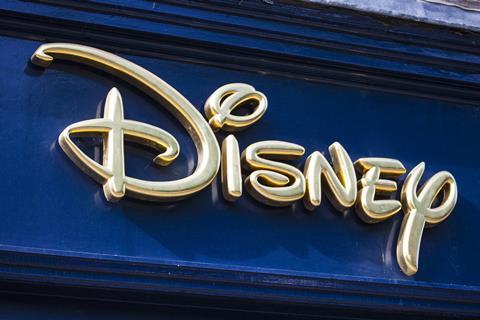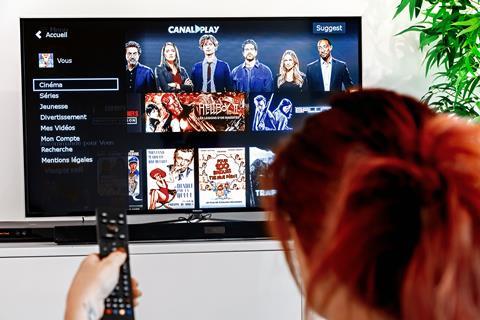In the second part of our M&A series, Andy Stout looks at the big movements in the broadcaster space.

M&A activity amongst the broadcast fraternity is less tied into the tradeshow axis than movements amongst the vendors, so there has been a steady trickle of news as the year has progressed with no obvious reasons for any clumping.
In brief, there seem to be two main drivers behind the scenes: the desire to scale as a direct response to the threat of Netflix et al; and the desire to acquire new technology, or at least collaborate on its development, to address the same issue.
- Read more in part one: M&A: Vendor consolidation continues
That said, not everything runs smoothly. Altice France announced that it was in exclusive discussions to take over a majority interest in OTT platform provider Molotov back in January. Amounts were not disclosed, but Molotov had courted more than one investor, including France Télévisions, Canal+ and Orange, in a bid to accelerate the momentum that had seen it reach 7 million users in France in only a couple of years, albeit at a high burn rate.
However, despite positive noises at the start of the year, by mid-May negotiations were said to be at a standstill. The situation is currently ongoing.
There is a significant amount of M&A activity in the marketing and ad tech technology space, up 28% quarter-over-quarter, and this is spilling over into the emerging digital ads sector in the broadcast industry.
RTL Group kicked the year off proper by buying Yospace for $33m “including upfront and performance-related components,” and appointing three of five members to the Yospace board. Yospace CEO, Tim Sewell, and CTO, David Springall, are continuing to manage day-to-day operations.
Having already acquired SpotX in 2017, RTL has continued to build up its technology stack, in this case with the acquisition of a dynamic ads insertion specialist already focussed on the premium streaming segment.
The competition in this sector is not only with other broadcasters, who are also increasingly looking for pan-European solutions, but the tech giants of Facebook, Google, Amazon et al, who are increasingly impacting ad revenues. As a result, Digital Ad Insertion is not only seen as the future, but a future that needs to happen fast enough that technologies need to be acquired and integrated rather than developed from the ground up.
Virgin Media’s deal with Sky to use its AdSmart technology – a partnership, rather than M&A - which launches on 1 July, illustrates the pressures in this area nicely. Sky brings its well-regarded and impressively granular targeted ads technology to the table, which has been refined hugely since it first launched in 2014, while Virgin brings 4m households across the UK and Ireland.
And that is, of course, almost small potatoes when compared to the decision that Sky’s new owner Comcast made in March to replace NBCUniversal’s existing ad targeting service with AdSmart. Dropping the ‘Sky’ from the front of AdSmart’s branding at the same time, emphasises Comcast’s desire to turn the technology into a “global premium video offering” for advertisers, while its decision to also deploy the broadcaster’s Now TV streaming technology in the US market in 2020 further highlights that the original $38bn takeover last year had technology very close to its heart.
AdSmart in the US will face significant competition though, not least from Nielsen’s Advanced Video Advertising Group, a relatively new group formed by the measurement specialist who bought Sorenson Media in a bankruptcy court proceeding for $11.25m. In this it faced enough rival bids (starting at $3m) to suggest that the technology behind Sorenson’s addressable advertising offering is sound, even though a business model that had boasted of a potential $1bn valuation only a year before filing for Chapter 11 probably wasn’t.
Disney is looking at impressive economies of scale
And staying briefly in the US, Comcast sold its remaining stake in SVOD provider Hulu to Disney for around $5.8bn in May. Conversations within the ‘House of Mouse’ about how content will be prioritised and directed between Hulu and its Disney+ service launching in the autumn are said to be fluid, with the likelihood that Disney+ will major more on brand-driven titles from the Star Wars and Marvel stables.
Disney, meanwhile, is looking at impressive economies of scale involving everything from billing to ads to recommendations across a three-pronged service that also includes ESPN+.
Desire to scale
In Europe, much broadcaster activity seems to be driven by that same desire to scale, as well as share technologies in areas such as streaming services. Italian broadcaster Mediaset SpA purchased a 9.6% holding in Germany’s ProSiebenSat.1 Media SE for $380m in May, for example; both are already members of the European Media Alliance network that is seeking to attract advertisers to a common digital platform while sharing the costs of its development.
The potential savings that scale can bring have driven very recent further high-level reorganisation at the company too. Mediaset has created a new holding company, MFE-Mediaforeurope, that will control 100% of Mediaset SpA and Mediaset España, as well as the ProSiebenSat.1 holding. All in all, the company claims to have identified an annual $121m in savings and synergies that will be realised over the next four years, with more to come.

Recent enough that it is still waiting for approval, the Canal+ broadcasting group has made a move for the Astorg-owned independent pay-TV aggregator and distributor M7. M7 will bring around 3 million subscribers to the deal, growing Canal+’s subscriber base to close to 20 million and seeing it move into seven new European countries. M7 has a turnover of $452m and is valued at just over $1.1bn, a fairly low multiplier that perhaps reflects the high rates of churn expected across the industry.
OTT specialist Edgeware purchased Swedish subtitling company Cavena Image Products for $850k at the start of the year. In terms of an out and out amount, it’s a fairly small deal. But Cavena has a decent client roster, including Sky, Canal+ and HBO Asia, and being able to offer automated subtitling in the OTT space is an interesting proposition.
On the platform side of things, Vimeo snapped up video creation service Magisto in April for a figure rumoured by several sources to be around $200m. Magisto has around 100 million users for its video creation service (Vimeo has 90 million) and the two companies are planning to work together to develop new short-form video creation tools for the Vimeo platform as well as embed Vimeo publishing and metrics directly into the Magisto software. Both run a monthly subs business model, and both tap into the similar prosumer market targeting small business looking to create content for social media. What will be interesting to see is if the sort of AI-powered editing tools being developed by companies like Magisto start migrating upwards and interest the professional video market.
And finally, there are reports that UK telco BT is looking to join the shareholders of the forthcoming BritBox service. It already partners with the BBC and ITV on the YouView platform, on which its own BT TV service is based, but the additional investment in BritBox would further refine its role of becoming a super aggregator and offering a wider range of services via its STBs. Talks are at a very early stage, however, and given that negotiations between ITV and the BBC have also hit a bumpy patch themselves, there is already plenty of pressure on the hoped-for H2 2019 launch of the service.
- Read more in part 3: M&A: Current drivers and future directions
M&A: Vendor consolidation continues
- 1
- 2
- 3
 Currently reading
Currently readingM&A: Broadcasters search for scale























No comments yet